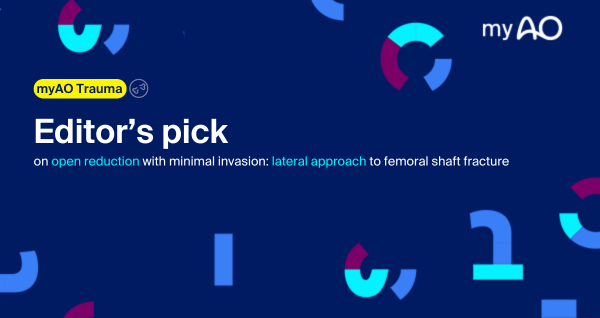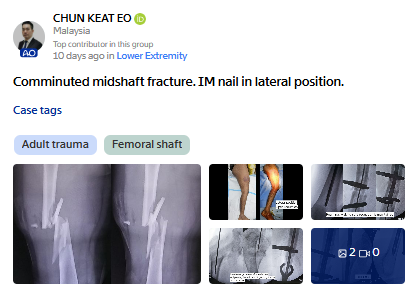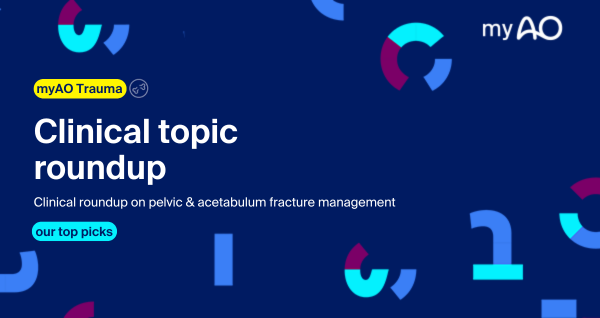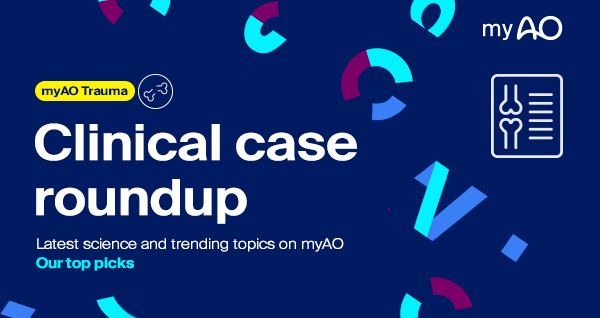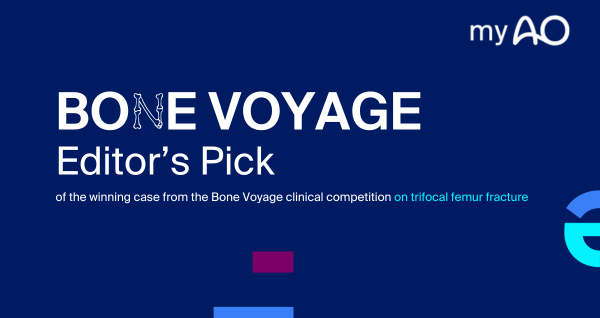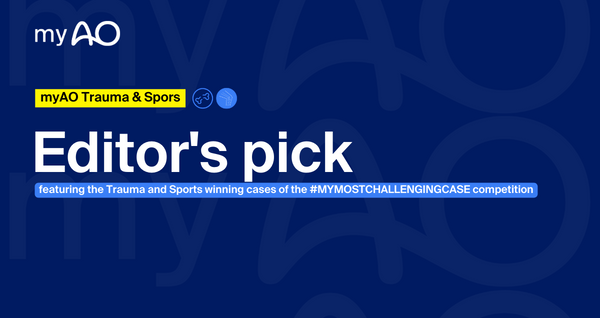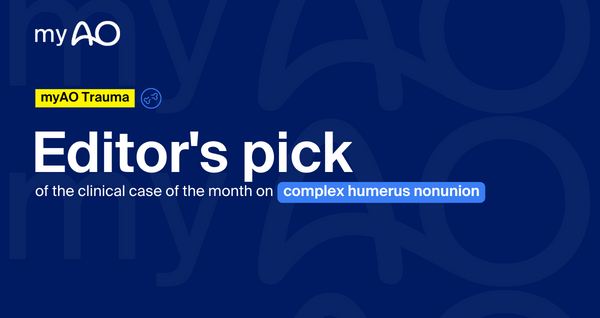Orthopedic Trauma and Reconstruction
- Your profile is becoming a central part of the myAO experience, reflecting your achievements and contributions in the surgical world. Your myAO profile is now an outstanding means to […]
- Posterior wall acetabular fracture fixation via Kocher-Langenbeck approach In this month’s Editor’s pick, myAO is featuring the winning case of the Bone Voyage clinical competition, […]
- Editor’s Pick of the clinical case of the month on complex lower limb trauma In this month’s Editor’s Pick, myAO is featuring a case published by Dr. Rodel Banggiacan involving […]
- myAO clinical roundup on pelvic & acetabular fracture management Pelvic and acetabular fractures represent some of the most complex injuries in orthopaedic trauma, often requiring high-level […]
- myAO trauma clinical case roundup on ipsilateral femur and tibia fractures with bone loss In this month’s Trauma clinical case roundup, myAO is featuring a case with a challenging […]
- myAO Trauma Editor’s Pick on trifocal femur fracture In this month’s Editor’s Pick, myAO is featuring the winning case of the Bone Voyage competition. We thank all the competition […]
- #MYMOSTCHALLENGINGCASE winners spotlight in myAO’s Editor’s Pick In this month’s Editor’s pick, myAO is featuring the Trauma and Sports winning cases of the #MYMOSTCHALLENGINGCASE competition, submitted by Alexander […]
June 2023
Our editorial team has selected an interesting clinical case on the topic of humeral nonunion posted by Profesor Hans-Christoph Pape in the myAO Bone Graft group.

